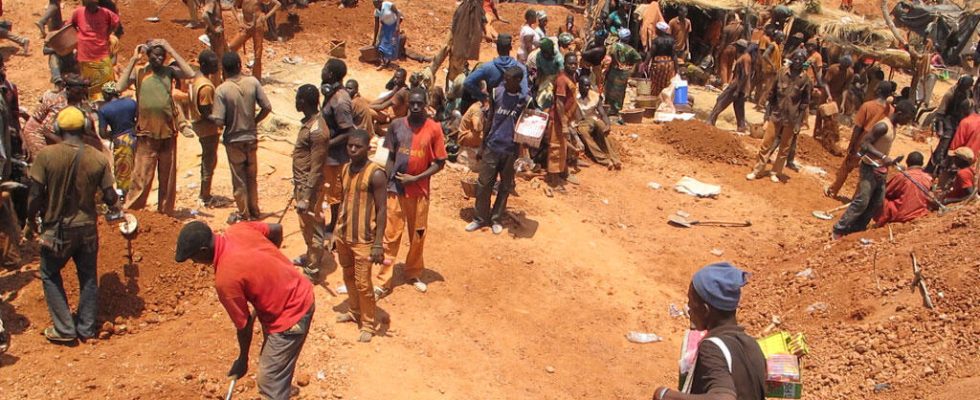The Malian army and its proxies from the Russian Wagner group invested the Intahaka gold mine during the weekend. This is a vast artisanal gold panning site located in the Malian Gourma, commune of N’Tillit, approximately 80 kilometers from Gao, in the North. Is it a question of securing the site, frequented until now by all the armed groups in Mali, or of taking advantage of this raw material?
3 mins
They arrived on Friday February 9 by helicopter. The sources joined by RFI all confirm the landing of numerous mercenaries from the Wagner group, accompanied by Malian soldiers. No precise figures could be obtained.
Intahaka is the largest artisanal gold mine in northern Mali. For around six years, thousands of gold miners from all over the country but also from Sudan, Chad and Niger have been working together there. Using a pickaxe and in particularly harsh conditions, they dig the earth in search of a few grams of gold and a better life.
Gold miners taxed by armed groups
But the gold miners were never alone in Intahaka: rebels from the CSP (Permanent Strategic Framework), jihadists from the Jnim (Support Group for Islam and Muslims) linked to al-Qaeda or the Islamic State in the Sahel organization. , almost all the armed groups present in Mali have succeeded one another and sometimes even clashed.
Those familiar with the site describe carefully organized tax collection systems, which is confirmed by a report from the UNODC (United Nations Office on Drugs and Crime) published last November. In this report, UN experts warn of the use by the various armed groups active in the Sahel of gold trafficking to finance themselves. According to official Malian figures, the country’s artisanal mines produce at least 26 tonnes of gold each year, an estimate necessarily very underestimated, because it does not take into account the sites controlled, precisely, by armed groups in the North .
Securing the site
Local security and civilian sources assure that the objective of Wagner’s deployment to Intahaka is to secure the site and prevent non-state armed groups from benefiting from this windfall. Searches were carried out in the gold miners’ shelters and the men with weapons were all excluded from the mine, including those from Gatia, a local armed group allied with the Malian transitional authorities and involved, in recent months, in the management of the mine. site.
According to several corroborating sources, the Gatia fighters were escorted on Saturday evening by the Fama towards the locality of Intarkad, around thirty kilometers from Gao. The Wagner group mercenaries reportedly left Intahaka on Sunday, promising to return. It is now the soldiers of the Malian army who ensure the security of the site.
Mineral resource coveted by Wagner?
Other sources, mainly among the CSP rebels, assure on the contrary that Wagner’s mercenaries mainly came to profit from the mine. They claim that gold and sums of silver were stolen, which no independent source has been able to confirm. These sources also believe that Wagner’s arrival on the site heralds, if not its direct exploitation, at least future tax collections by the Russian paramilitary group.
In the Central African Republic and Sudan, mining is a known and widely documented source of income for the Wagner group. To date, this model has not been duplicated in Mali where these “partners”, auxiliaries of the army, are financed by the Malian state.
Requested by RFI, the Malian army did not respond and did not officially communicate on this deployment in Intahaka.
Read alsoMali: the Wagner group and the army accused again of abuses in the Niono circle
